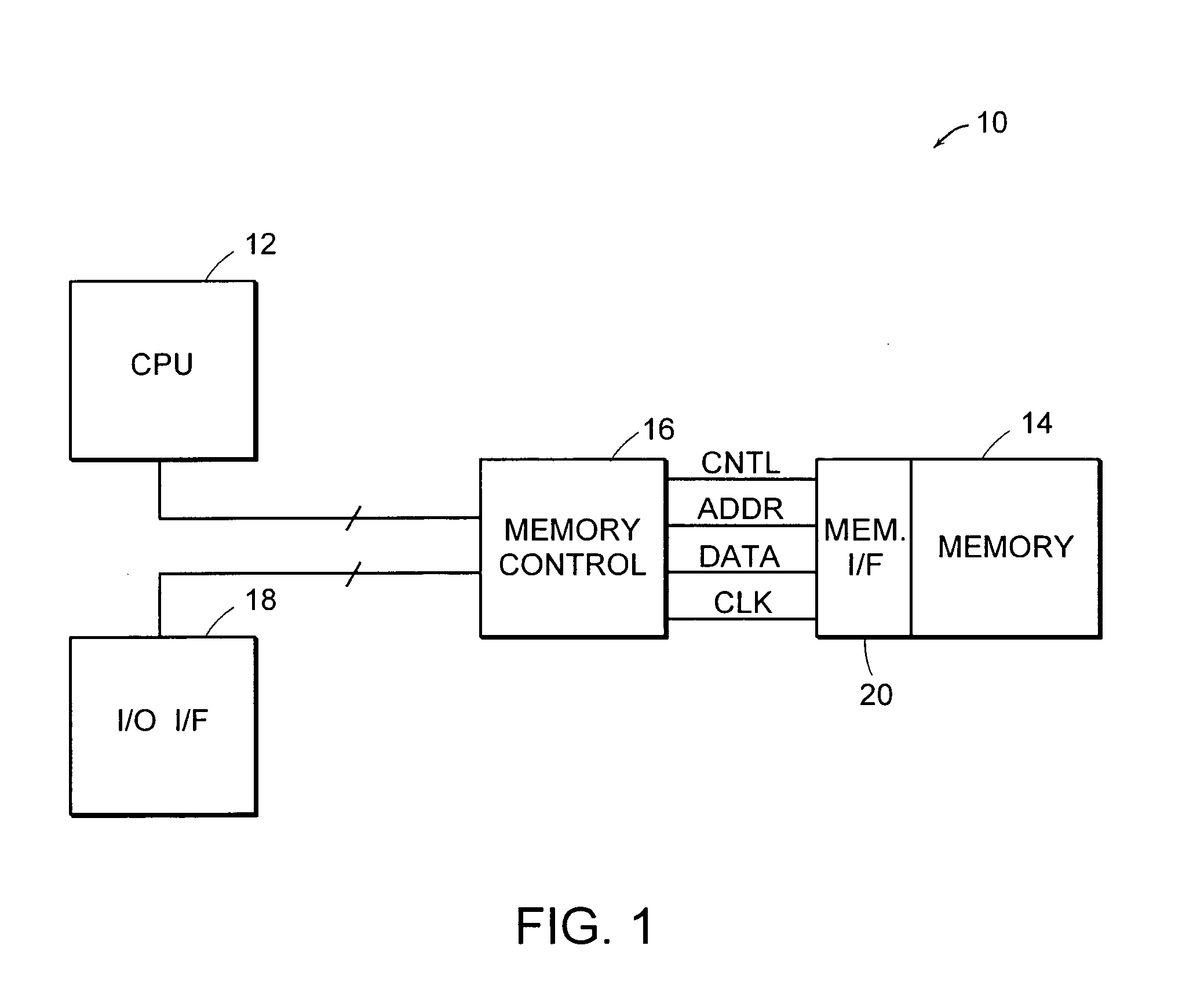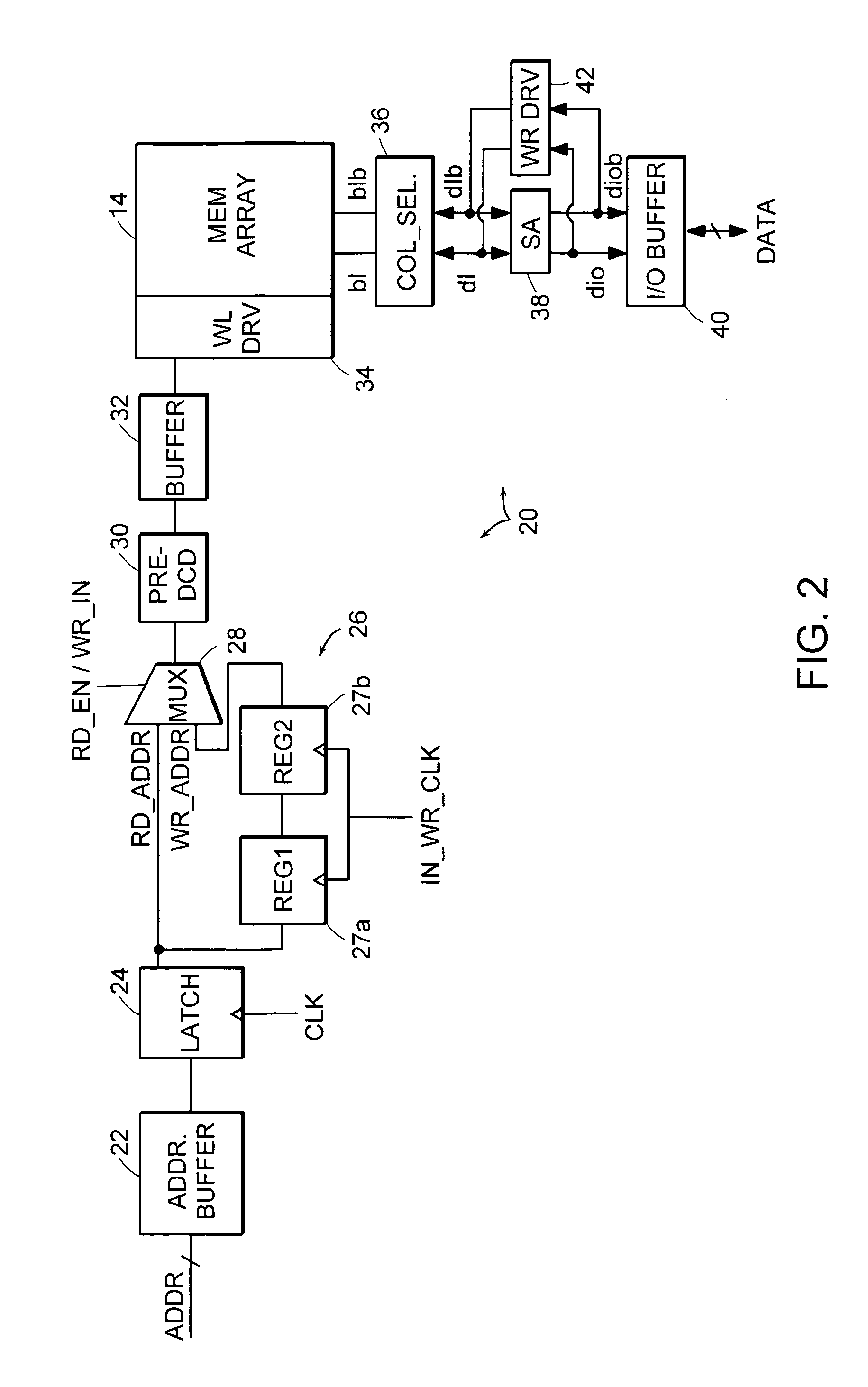Memory interface system and method for reducing cycle time of sequential read and write accesses using separate address and data buses
a memory interface and data bus technology, applied in the field of memory interface systems and methods, can solve the problems that the memory access cannot be quickly followed by the other memory access, and achieve the effects of reducing cycle time, increasing throughput, and substantially increasing data throughput across the data bus
- Summary
- Abstract
- Description
- Claims
- Application Information
AI Technical Summary
Benefits of technology
Problems solved by technology
Method used
Image
Examples
Embodiment Construction
[0029]Turning now to the drawings, FIG. 1 illustrates various functional blocks of a computing system 10. System 10 includes a microprocessor or CPU 12. CPU 12 is oftentimes referred to as an execution engine or processor. Most CPUs are known to incorporate two operational units: an integer unit and a floating-point unit. These units communicate data via a data cache and are controlled by a single instruction stream supplied by an instruction cache. The data cache and instruction cache can be connected to memory 14 if desired by a memory controller 16. The instruction cache can supply multiple instructions per fetch if, for example, CPU 12 is a superscalar processor. The actual number of instructions fetched can vary. As the instructions are dispatched from the instruction cache, a decoder will decode those instructions and place them into a prefetch unit, and finally into the execution engine. Any out-of-order conditions can be resolved by a reorder buffer, which places those instr...
PUM
 Login to View More
Login to View More Abstract
Description
Claims
Application Information
 Login to View More
Login to View More - R&D
- Intellectual Property
- Life Sciences
- Materials
- Tech Scout
- Unparalleled Data Quality
- Higher Quality Content
- 60% Fewer Hallucinations
Browse by: Latest US Patents, China's latest patents, Technical Efficacy Thesaurus, Application Domain, Technology Topic, Popular Technical Reports.
© 2025 PatSnap. All rights reserved.Legal|Privacy policy|Modern Slavery Act Transparency Statement|Sitemap|About US| Contact US: help@patsnap.com



